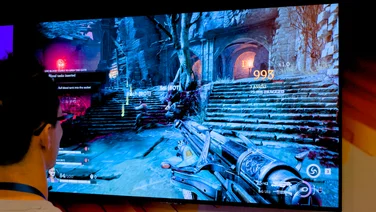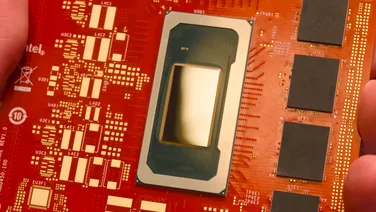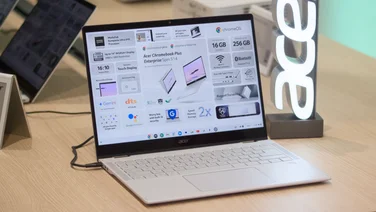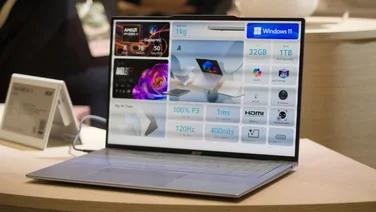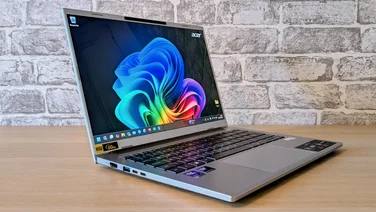To help us provide you with free impartial advice, we may earn a commission if you buy through links on our site. Learn more










- Compact and lightweight
- Stonking battery life
- Superb keyboard and touchpad
- Expensive for the specification
- Display is a little drab
When Microsoft moved its consumer Surface Laptop range to Snapdragon chips last year, it was a brave move, and, largely, it paid off. The Surface Laptop 7 was our favourite laptop of 2024, combining snappy performance with impressive repairability and a reasonable price. The company has followed it up with the Surface Laptop 13in, but this time – I think – it has missed the mark.
The new machine is more compact than the Surface Laptop 7 and it comes with a less powerful processor inside, while the design feels ever so slightly less refined. It’s cheaper, too. The trouble is, it isn’t quite cheap enough. And while there’s a lot to like about this latest Surface, it can’t quite justify the £899 starting price tag.
Microsoft Surface Laptop 13in review: What you need to know
Given that we’re more than a year on from the launch of the Surface Laptop 7, you might have expected Microsoft to have launched an upgraded model by now – complete with faster performance and better specifications – but the lack of a new generation of Qualcomm chips means it can’t make that jump just yet.
Instead, it has used the 8-core Snapdragon 8 Plus (X1-42-100) chipset inside the Surface Laptop 13in, resulting in a laptop that is cheaper and, ultimately, less desirable than its (slightly) more expensive siblings.










The Surface Laptop 13in is both smaller and slower than last year’s Laptop 7; it comes with a 13in, 60Hz 1,920 x 1,280 IPS touchscreen, which in typical Surface fashion, adopts the squarish 3:2 aspect ratio. And it’s all backed with a standard 16GB of RAM and either 256GB or 512GB of storage.
Price and competition
Configuration tested: 8-core Qualcomm Snapdragon X Plus, 16GB RAM, 512GB SSD, 13in 1,920 x 1,080 IPS 60Hz touchscreen. Price when reviewed: £999
Despite appearances to the contrary, there are actually only a couple of variants of the Microsoft Surface Laptop 13in available: one with a 256GB SSD costing £899 and the other with a 512GB SSD that comes in at a pricier £999. The multiple variations on the Microsoft website come courtesy of three colours – platinum, ocean and violet – the latter two only available in the more expensive 512GB storage spec.
That’s a lot to ask, especially as the regular Surface Laptop 7, which is faster and has a larger screen, is now available at a reduced price of £1,049. Perhaps more telling, though, is that other laptops with similar hardware are available for less.
- The Dell Inspiron 14 Plus is the most direct competitor that we’ve reviewed recently. Not only does it come with a slightly faster version of the 8-core Snapdragon X Plus chipset (the X1P-64-100), it is now £100 cheaper than the base Surface Laptop 13in and comes with four times the storage (1TB). The only area it misses out on is the screen; although touch compatible, its 16:10 aspect ratio isn’t as well suited to day-to-day work as the 3:2 display on the Surface Laptop 13in
- Next on the list is the Acer Swift 14 AI, another laptop with the faster 8-core Snapdragon X Plus chipset. Again, this machine is cheaper than the Surface, costing from £699, and comes with a 1TB SSD. It isn’t as compact or neat as the Surface, though, or as nice to use
- If you want an even lighter, slimmer machine, you could do a lot worse than opt for the Asus Zenbook A14. You can pick one of these little lovelies up for £899 now, and although it’s a little slower than the Microsoft machine, you’ll be getting double the RAM and four times the storage
- My final recommendation, and possibly the main reason you might not end up buying the Surface 13in, though, is the 13in Apple MacBook Air (M4, 2025), which since launch has dropped in price to a highly tempting £849. It isn’t quite as compact as the Surface Laptop and its battery life isn’t quite as good, but it is a far more powerful laptop and a joy to use
Design and features
I’ve already used the words “neat” and “compact” to describe the Microsoft Surface Laptop 13in, and your response to that might very well be something along the lines of: “How compact can a laptop get?”
The reason for my comments are the size of the Surface Laptop 13’s footprint, which is smaller than the MacBook Air 13in’s by a square centimetre or so. That might not sound like much, but combined with the squarer shape, the laptop is noticeably more compact that other 13in machines. It’s a tad more chunky but its lighter weight – just 1.17kg – more than makes up for that.










Generally, it feels very well put together, too. The lid opens smoothly with a single finger and both lid and base are clad in stiff, robust-feeling aluminium. Give it a twist or a firm prod and nothing untoward will happen; this laptop feels like it’ll survive a good few years of being unceremoniously chucked in bags and lugged around from lecture to lecture, or home office to work without complaint.
It’s not all good news, however. The screen hinge doesn’t allow you to fold the display all the way back to 180 degrees and the touchscreen is only protected by unbranded “strengthened glass”, instead of the Gorilla Glass 5 you get on the Surface Laptop 7.
Around the edges of the laptop you’ll find a couple of USB-C ports on the right side, and a USB-A port on the left edge next to a 3.5mm headset jack, all of which sounds fine. That’s until you realise that the USB-C ports aren’t USB 4 capable and are limited to maximum 10Gbits/sec transfer speeds. That’s fast enough for most, but in a laptop costing upwards of £899? I’d want the very latest connections standards, thankyou very much.










Most disappointingly, perhaps, is that while the Surface Laptop 7 is easy to get inside and modular to a certain degree, enabling easy replacement of the battery and various components, the Laptop 13in is an absolute pain to pry open.
The rubber feet pop off easily enough – there’s no nasty adhesive here, thankfully – and there are only four T5 Torx screws to remove, but separating the keyboard from the base is tough. I gave it a good old try but had to give up or risk snapping one of the many plastic clips holding the two halves together. It’s surprising and disappointing.
Keyboard, touchpad and webcam
Fortunately, the rest of the hardware is more impressive. And it starts with the keyboard, which is a pleasure to type on. The action is light, yet gives a decent dig of feedback, the base is solid and not bouncy, and it’s backlit with three levels of adjustment.
Aside from the mild irritation of half-height up and down cursor keys, the layout is largely sensible. You get a proper, double-height UK Enter key, and there’s very little in the way of squashed or shrunken keys. I’m not too keen on the power button (which doubles as a fingerprint reader) being built into the keyboard (it’s top-right, next to the Del key) but otherwise, this is a solid effort from Microsoft.










The touchpad is fine, too. It’s reliable, sensitive and feels reasonably smooth under the finger. It’s on the small side, though, and since it’s only a mechanical clicker, not really in the same class as the MacBook Air’s haptic Force Touch trackpad.
The webcam is good but flawed, too, capturing well-balanced and crisp images and video at 2.1MP / 1080p, but lacks support for Windows Hello face login. That’s a big miss for a Microsoft device and, again, a slightly baffling omission in an £899 laptop.
Display and audio
When it comes to the screen on the Surface Laptop 13in, it’s nice to see Microsoft sticking to its guns where the 3:2 aspect ratio is concerned. This measures 13in across the diagonal, is touch enabled and has a resolution of 1,920 x 1,280. It isn’t OLED, more’s the pity, and the refresh rate is only 60Hz, but overall, it’s a decent display. I particularly like the fact that it supports both automatic brightness and automatic colour adaptation based on the ambient lighting in your immediate environment.
In testing, the screen performed reasonably, but didn’t outright cover itself with glory. Brightness peaked at 394cd/m2 when I measured it, which is bright enough to read in most environments, and the contrast ratio reached 1,827:1, which means the image on screen is nice and punchy, although it will never reach the vibrant heights of an OLED panel.










In terms of the breadth of colours the panel is capable of reproducing, however, the results weren’t brilliant. The display only produces 90.5% of the sRGB colour space, which means it’s a tiny bit on the dull side, although the average Delta E error of 1.73 means colour accuracy is pretty decent, at least. It certainly can’t match a laptop like the Asus Zenbook A14, whose OLED display tops 600cd/m2 and can generate more than 100% of the P3 colour space.
Moving from vision to audio, the speakers are, once again, on the middling side, able to kick out a decent amount of volume and with a fair amount of warmth and body, although as you’d expect, it does lack a little bass. The speakers are more than adequate for the purposes of a video calls and podcasts, but I’d advise connecting a pair of headphones for listening to music and watching movies.
Performance
The Surface Laptop 13in isn’t the most powerful of laptops. In fact, as the benchmarks prove, it’s a slower machine than last year’s Surface Laptop 7. That’s because it’s powered by the slowest of Qualcomm’s Snapdragon X Plus 8-Core chips, whereas last year’s machines were powered by the 10-core X Plus and 12-core X Elite.
The good news is battery life is exceptional. You can use this laptop all day, and all the next – perhaps even into the following day – without having to revisit the mains socket. And in our battery life video playback test, which we run with the screen adjusted to a preset brightness level (170cd/m2), it performed as well as in real world use lasting an incredible 23hrs 40mins, nearly matching the record performance delivered by the Acer Swift 14 AI.
Performance, as you’d expect, isn’t quite as good as laptops with the 10- or 12-core Qualcomm chips. Nor is it a match for the MacBook Air or Intel machines with the recent Core Ultra series 2 CPUs.
This is not a machine that I would feel comfortable running heavy duty computing tasks on such as video editing or 3D rendering, although to be fair to it, it is at least local AI-ready. Its NPU is rated at 48 TOPS, the same as the more powerful chips in its more expensive brethren.
It’s also clear to see from the Geekbench GPU and GFXBench results that you’re not getting incredible graphics performance.
And the speed of the 512GB drive in my test sample, while acceptable, is also at the slower end of the range.
And don’t forget that the Qualcomm chip inside the Surface Laptop 13in is an ARM chip, which means that, although most modern applications will run without complaint either natively or via the Prism emulator, you will at some point run into compatibility issues, either with a piece of older software or hardware you might want to run.
But despite all this, in general use as a day-to-day machine for getting regular work done with modern software, the Microsoft Surface Laptop 13in is a dreamboat. It’s smart, fast and responsive, and in all my time with it I had no complaints with general performance.
Microsoft Surface Laptop 13in review: Verdict
The Surface Laptop 13in is a very likeable little laptop. It has a battery that goes on and on and on. It’s small, lightweight and compact, it has a lovely touchscreen display, and the keyboard is decent, as are the webcam and the speakers. I do not like the fact that Microsoft has gone backwards where repairability is concerned but that’s my only major gripe from a hardware standpoint.
For all its strengths, though, I keep coming back to that price: £899 is a lot to ask for a cut-down version of your flagship laptop when your main rivals’ flagship ultraportables are either cheaper, more powerful, better specified or some combination of all three.
If I had this much money to spend, I’d spend it on a M4 MacBook Air or an Asus Zenbook A14 at around the same price – the former for its superior performance, the latter for its OLED display and still fantastic battery life.










Microsoft Surface Laptop 13in specifications
| Processor | Qualcomm Snapdragon X Plus X1P-42-100 |
| RAM | 16GB |
| Additional memory slots | No |
| Max. memory | 16GB |
| Graphics adapter | Qualcomm Adreno |
| Graphics memory | Shared |
| Storage | 512GB |
| Screen size (in) | 13 |
| Screen resolution | 1,920 x 1,280 |
| Pixel density (PPI) | 178 |
| Screen type | IPS 60Hz |
| Touchscreen | Yes |
| Pointing devices | Touchpad |
| Optical drive | No |
| Memory card slot | No |
| 3.5mm audio jack | Yes |
| Graphics outputs | USB-C DP AltMode |
| Other ports | 2 x USB-C 3.2, 1 x USB-A 3.1 |
| Web Cam | 1080p |
| Speakers | Stereo |
| Wi-Fi | Wi-Fi 7 |
| Bluetooth | Bluetooth 5.4 |
| NFC | No |
| Dimensions, mm (WDH) | 286 x 214 x 15.6mm |
| Weight (kg) – with keyboard where applicable | 1.22 |
| Battery size (Wh) | 50 |
| Operating system | Windows 11 Home |



